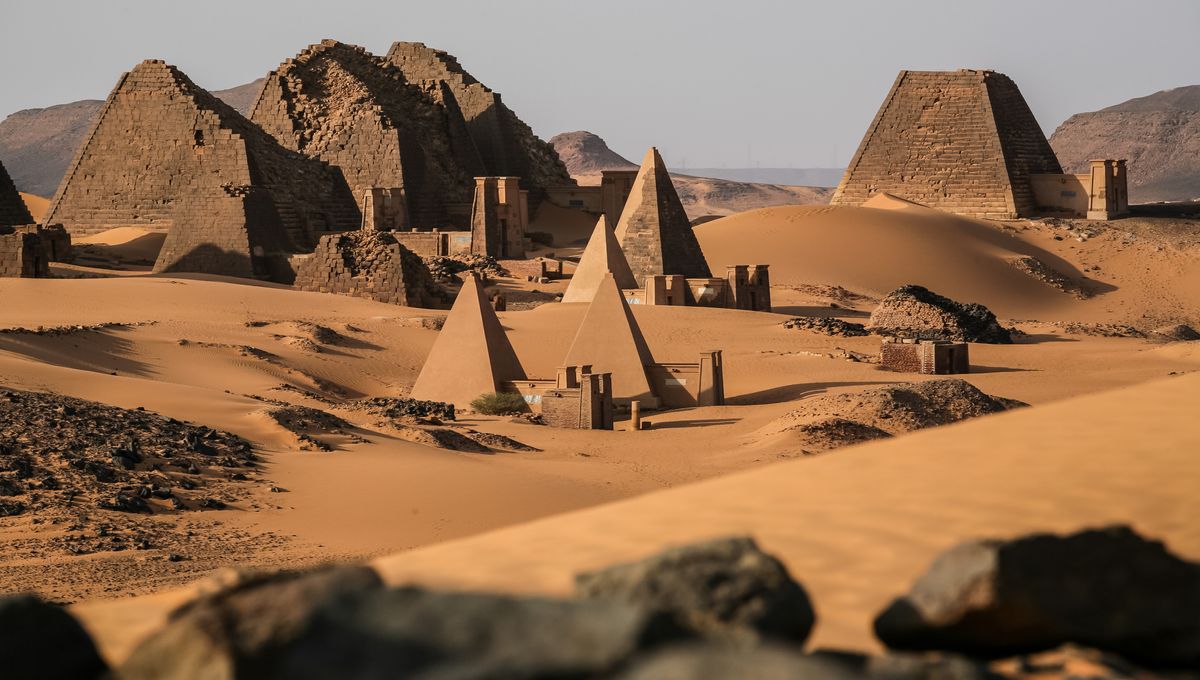
From Mesoamerica to North Africa, pyramids were apparently all the rage in the ancient world. Yet while the triangular monuments are most synonymous with Egypt, the world’s largest collection of pyramids actually belongs to another, less visited, country and absolutely dwarfs the number built by Khufu and co.
With somewhere between 220 and 255 pyramids standing within its borders, Sudan sits at the pinnacle of the list. Bordering Egypt, the African nation easily eclipses its neighbor’s total, which is the subject of dispute but likely tops out somewhere around 118.
Typically smaller than those found in Egypt, the Sudanese pyramids were constructed by the rulers of the ancient Kingdom of Kush. Emerging as a major power in the eighth century BCE within the region of Nubia – which stretched from Aswan in Egypt to Khartoum in Sudan – the Kushites even ruled over ancient Egypt during the 25th dynasty, producing a line of kings known as the Black Pharaohs.
The first of these was Piye, who successfully invaded Egypt to kick off the new dynasty in approximately 770 BCE, ruling from the Kushite capital of Napata. Taking inspiration from the lavish tombs of previous pharaohs, Piye demanded that he be buried in similar fashion, and became the first member of the kingdom to be commemorated with a pyramid at Sudan’s ancient El-Kurru necropolis.
After the Kushites lost control of Egypt, they retreated back to their corner of Nubia, eventually establishing a new capital at Meroë. It’s here that the vast majority of the Nubian pyramids can be found, with roughly 200 of the pointy monuments having been erected in the ancient city’s necropolis from the third century BCE onwards. Among these are the tombs of 41 Kushite royals.
As Meroë thrived, the Kingdom of Kush continued to prosper until the fourth century CE, when it was finally abandoned following conflicts with the Roman army and the neighboring Kingdom of Aksum. It would take until the 1830s for the history of this once great civilization to be rediscovered by archaeologists, thanks to the artifacts retrieved by the notorious tomb raider Giuseppe Ferlini.
Unfortunately, the unscrupulous Ferlini showed little respect to the Nubian pyramids when he ransacked them, causing enormous amounts of damage and leaving many of the ancient structures in a state of disrepair. And while some of Meroë’s pyramids have since been restored, most of the monuments have continued to crumble.
This gradual process of decay has not been helped by Sudan’s multiple recent civil wars, with ongoing conflicts since the 1950s representing a major barrier to tourism and the funding this brings for archaeology. So while Egypt’s pyramids have received millions of visitors every year and taken their rightful place among the world’s most cherished and protected ancient wonders, the Nubian pyramids have been overlooked and neglected.
Source Link: Which Country Has The Most Pyramids? It’s Not Egypt